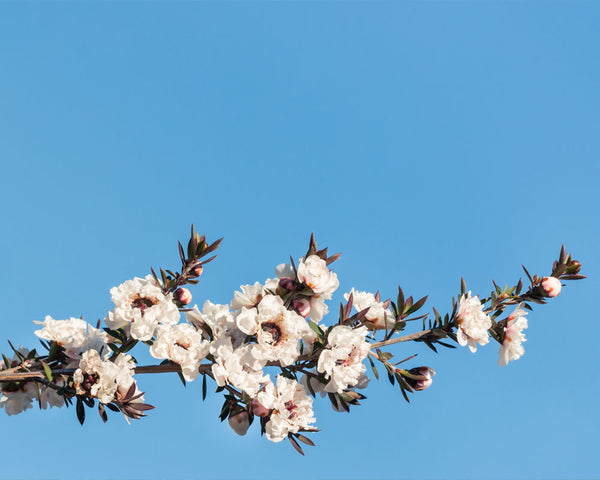There is a huge difference between Manuka Honey and other types of honey. This is no surprise to anyone who has tasted the unique floral notes and taste of Manuka Honey. So, why does it cost so much more than others? Let's look at 6 reasons why:
1. Manuka Honey is Unlike Other Types of Honey
Manuka Honey is incredibly unique and unlike other types of honey. Local wildflower honeys and regular table honeys may always have a place in your kitchen cupboard, but Manuka Honey contains 20 times the individual natural compounds, giving it a range of health benefits that are unique to Manuka Honey.
2. Real Manuka Honey Comes Solely from the Manuka Flower
To get pure, genuine Manuka Honey, bees must gather nectar solely from the Manuka flower. If bees gather nectar from Manuka flowers as well as other flowers nearby, this results in a 'Multi-Floral' Manuka such as our Manuka Blend.
To ensure bees gather nectar solely from the Manuka flower, beehives are placed in incredibly remote locations, often with the help of a helicopter, where there are high concentrations of Manuka flower for bees to gather from. The resulting Manuka Honey is 'Mono-Floral' which has a higher concentration of Manuka Honey's famously unique benefits.
3. Manuka Flowers only Bloom for 2-6 Weeks
Manuka flowers have an incredibly short flowering season of only 2-6 weeks each summer - that's as little as 14 days for busy bees to create enough Manuka Honey for the entire year! How busy are bees? Well, to make 1 jar of Manuka Honey takes bees 22,700 trips!

4. Manuka Flowers are Native to New Zealand
In addition to an incredibly short flowering season, Manuka flowers are only found in select locations throughout New Zealand - usually in isolated hills and forests.
Manuka bush is a wild shrub which is sensitive to changes in the weather, climate and pollution.
The more remote the location the Manuka bush grows, the healthier the resulting Manuka Honey will be. theHoneyman only sources Manuka Honey from these remote pristine locations where our bees have been left alone to produce their best honey.
5. Not all Manuka Flowers Create High Levels of MGO
Not all flowering blooms create nectar that has a high concentration of Manuka’s famous Methylglyoxal (MGO). Despite all the work of harvesting nectar from this rare flower to create this special honey, it may still not have meaningful levels of Manuka’s unique properties that make it beneficial for use in your wellness and beauty routines.
This is why it’s important to pay attention to the MGO grading shown on your jar of Manuka Honey - the higher the number, the more potent the honey will be. theHoneyman uses the MGO grading system to ensure quality in every jar.
6. An MGO829+ Grade is 10x more Potent than an MGO83+
You may think that three jars of Manuka Honey MGO263+ will be the same as one jar of Manuka Honey MGO829+, but that's not the case.
One jar of MGO829+ contains 3x the levels of MGO present in one jar of MGO263+, resulting in an incredibly potent honey.
For everyday wellness we recommend our Manuka Honey MGO83+, however for more powerful benefits we recommend a higher grade such as our Manuka Honey MGO514+ or higher.

